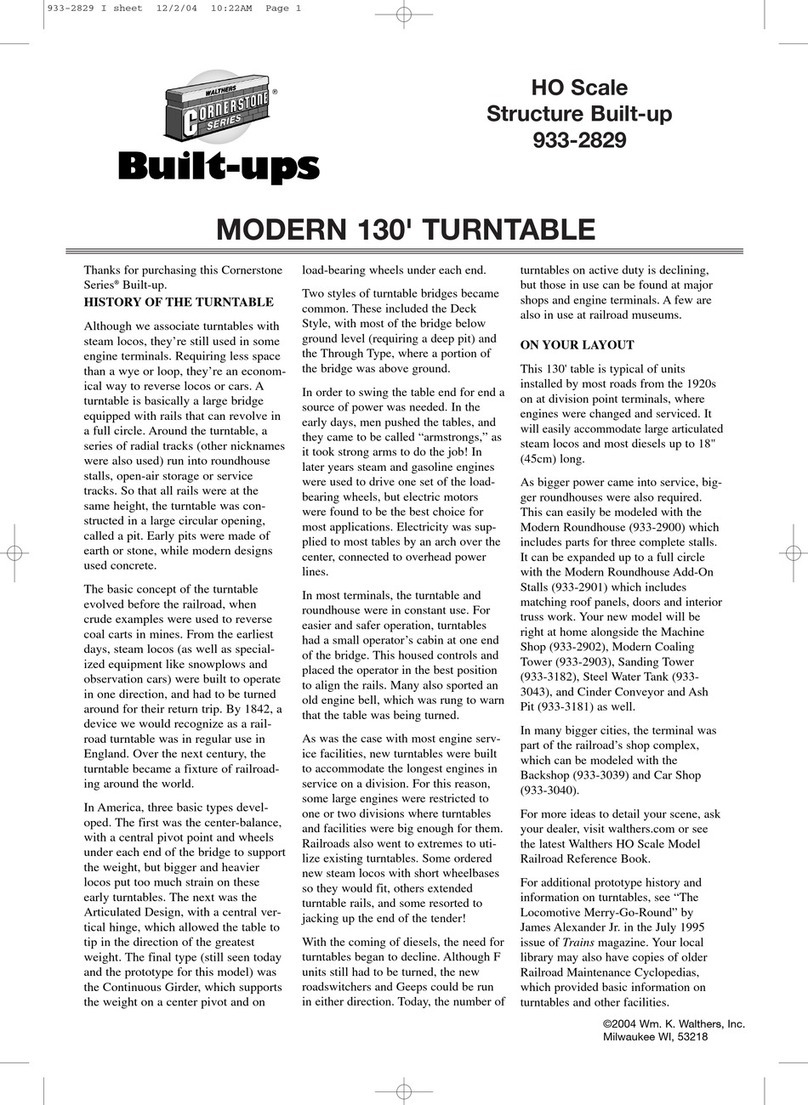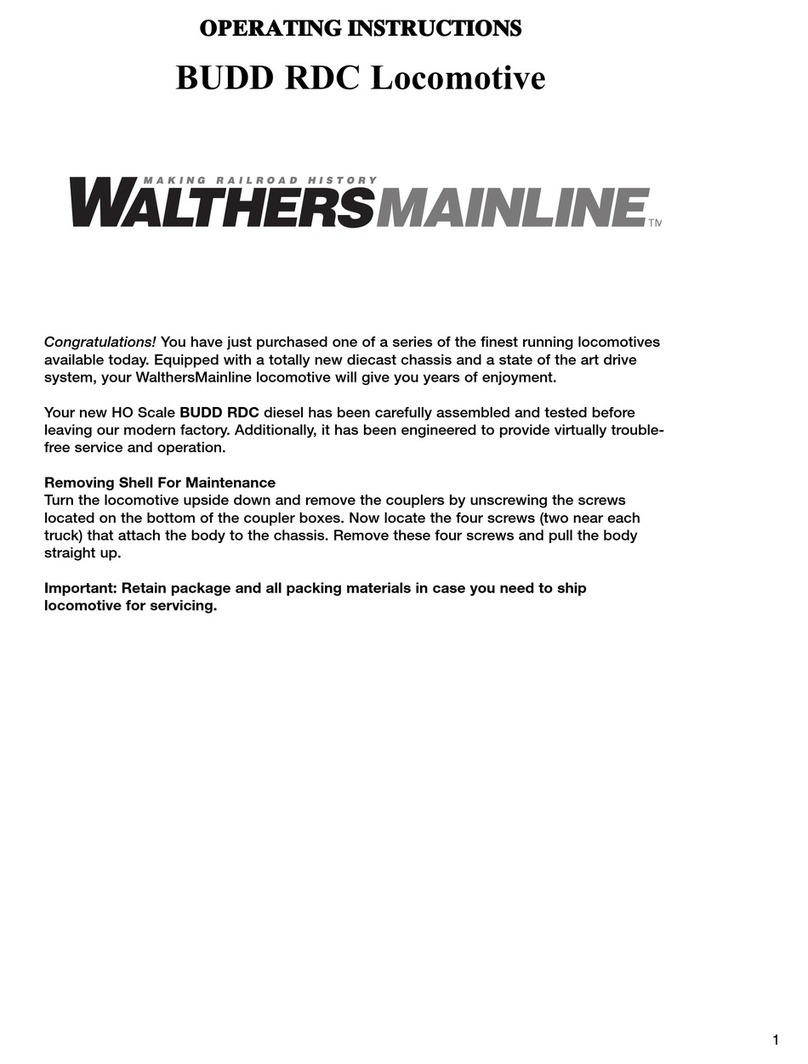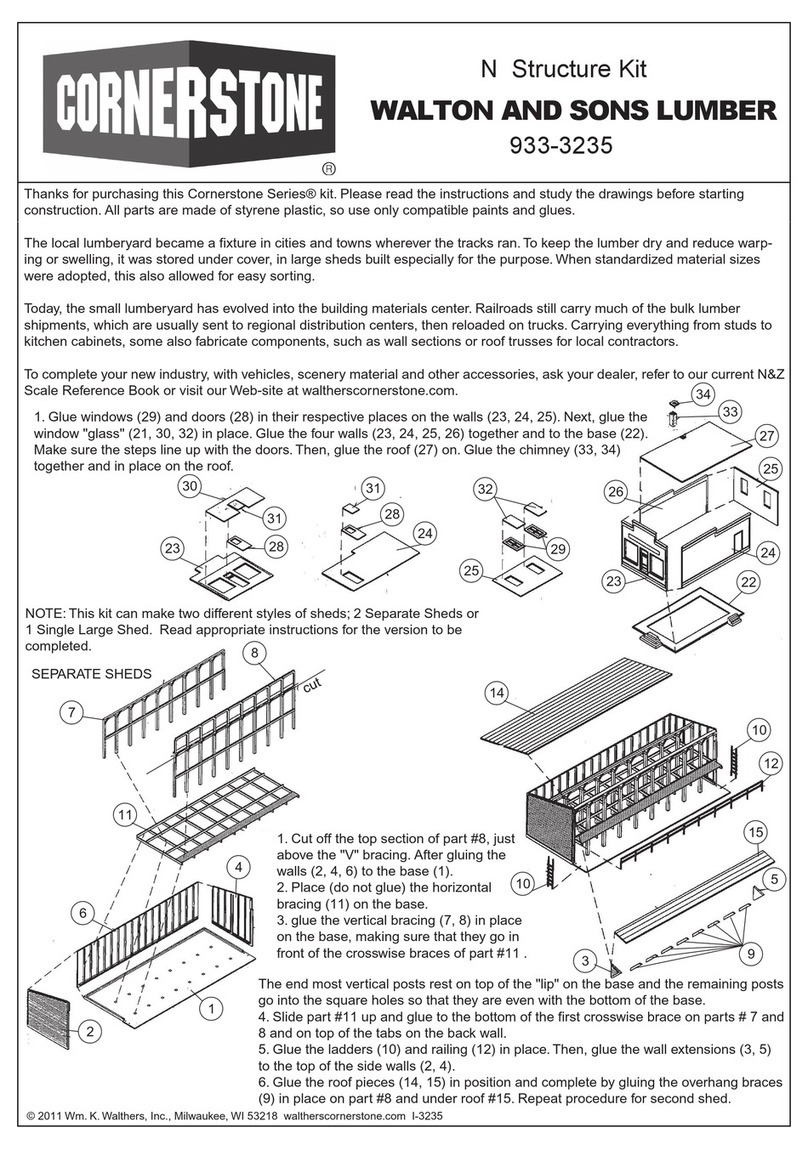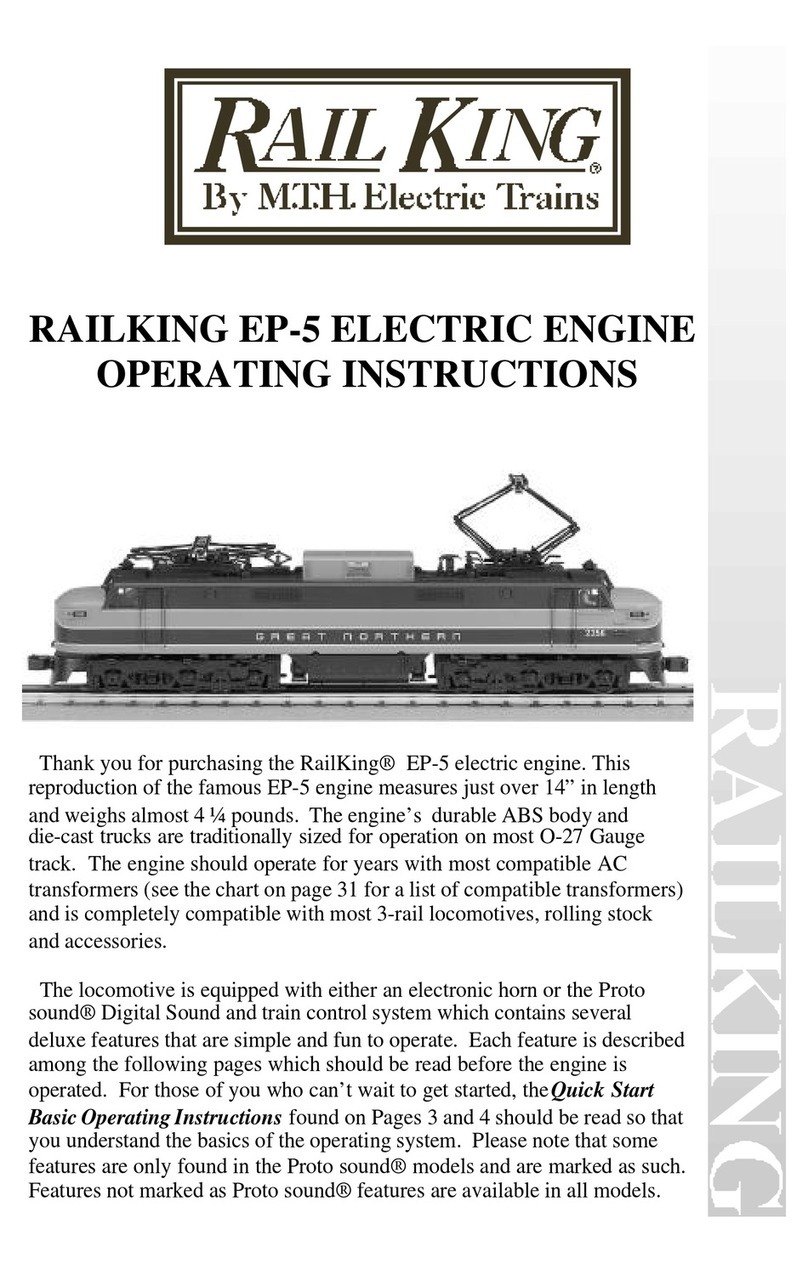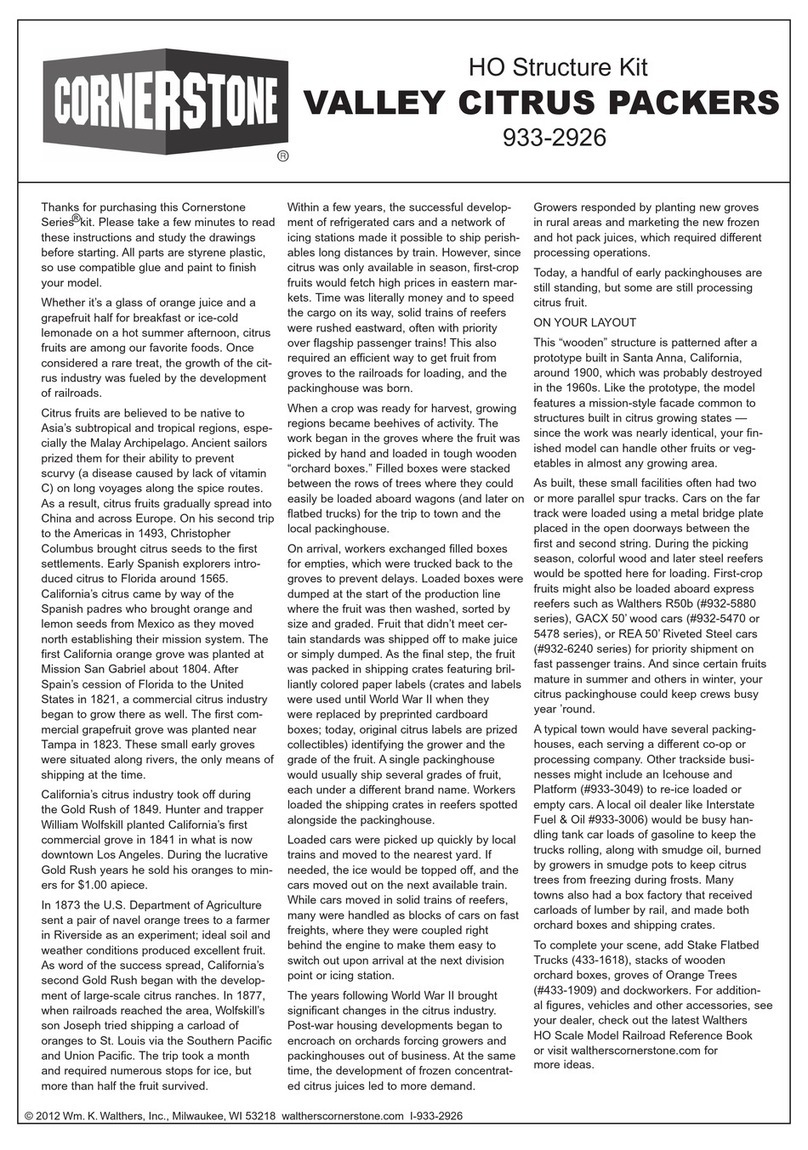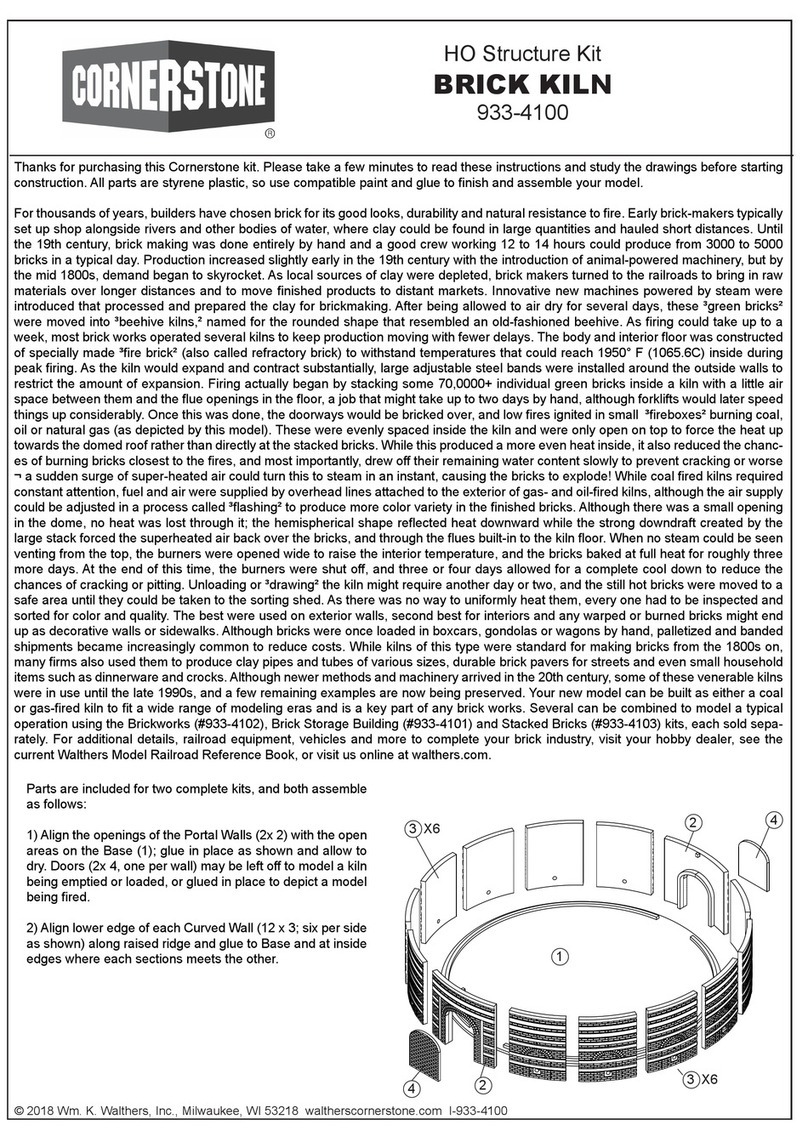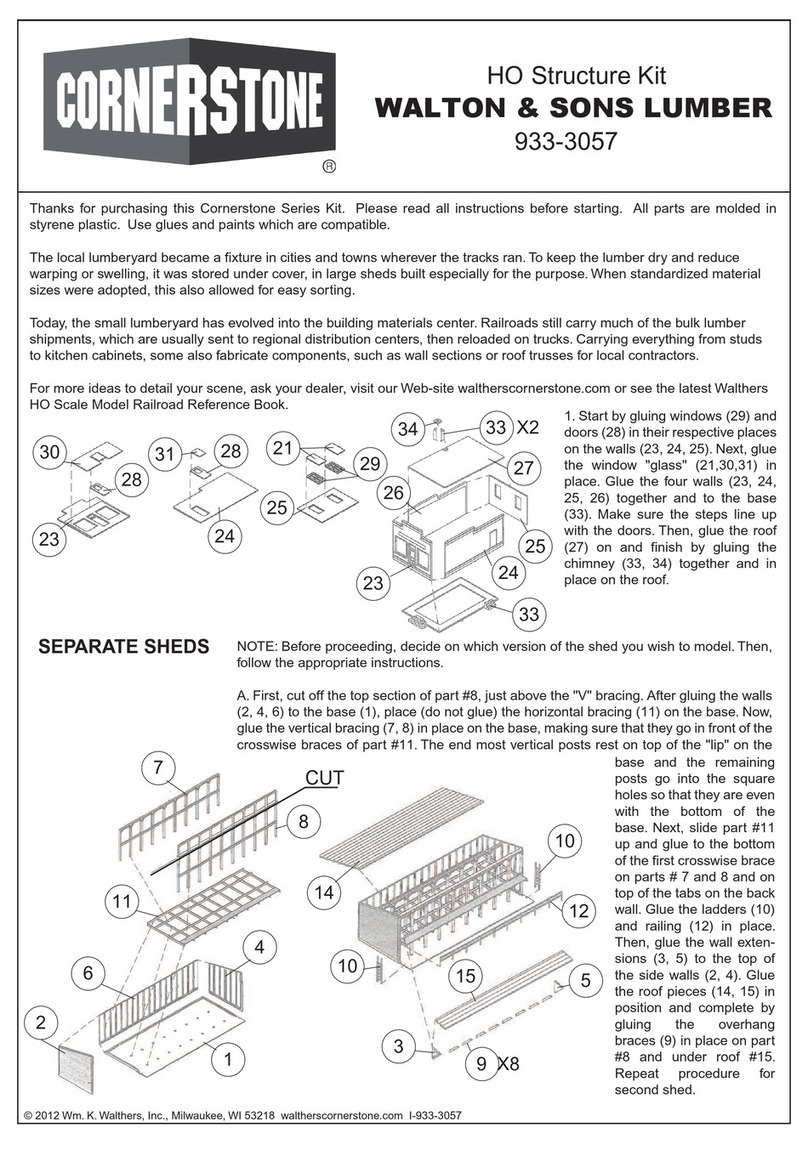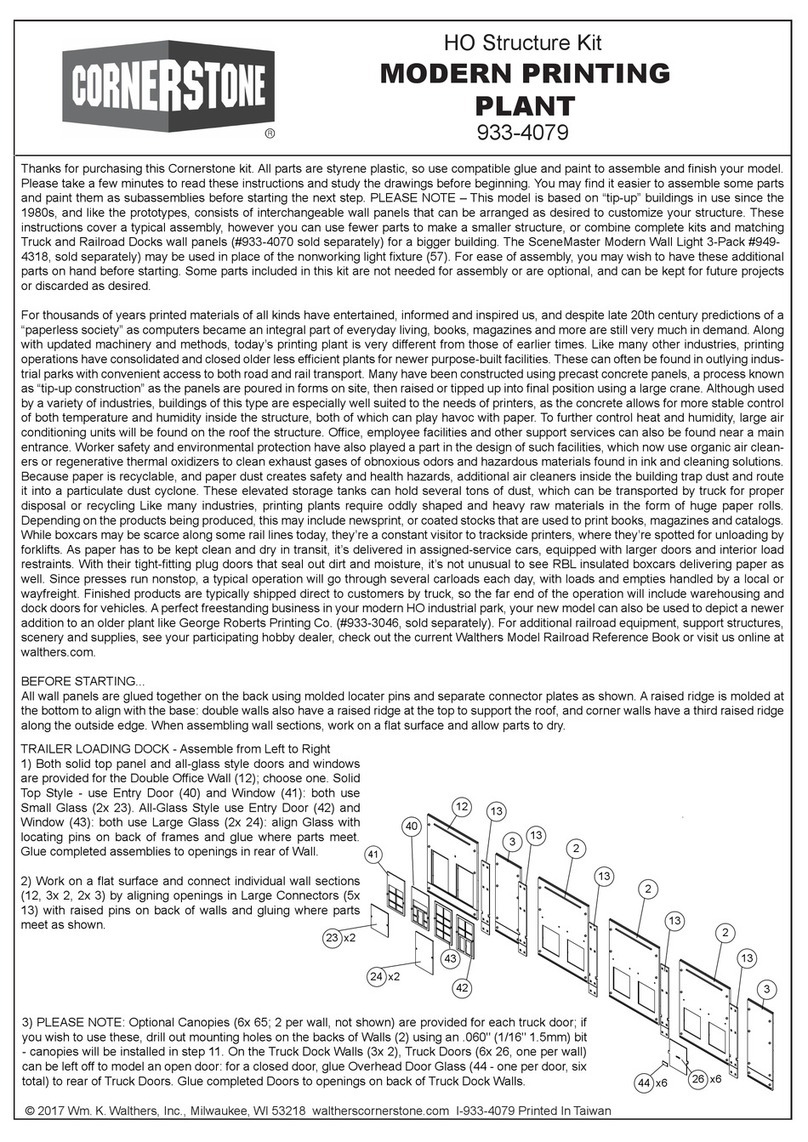Changing the Locomotive's Direction without Turning off the Soun
You can use the power pack's direction switch while the locomotive is in neutral to change the
engine's direction.
• Put the locomotive in neutral by bringing the throttle down below V-start and wait or the
locomotive to stop9 .
•Flip the direction switch a ter you hear the short air release but be ore you hear the
longer air release and the pump sounds turn on. During this short time (3 seconds) the
horn will not blow when you lip the direction switch.
• Turn up the throttle anytime therea ter to operate the locomotive in the opposite
direction.
I you have waited until the pumps start in neutral and now wish to change direction, you can either:
1. Turn the power all the way o , change the direction switch and turn the power back on,
or,
2. Flip the direction switch (the horn will come on) and then turn up the throttle. When the
locomotive starts to move in the opposite direction, the horn will stop automatically and
then hoot one more time i the direction is Forward or a total o two hoots. Or i the
direction is Reverse, the horn will hoot two more times or a total o three hoots10.
Note: To prevent the irst horn hoot rom being too long, do not delay in turning up the
throttle a ter you have lipped the direction switch.
Stan ar Throttle Control™ (STC™) an Regulate Throttle Control™ (ATC™)
Quantum locomotives have two types o Analog throttle control available, Standard and Regulated
Throttle. Both Standard Throttle Control (STC) and Regulated Throttle Control (RTC) will apply
more power to the motor as a unction o increasing track voltage beginning at the V-Start setting.
RTC includes a motor speed control eature that prevents the locomotive rom reacting quickly to
changes in voltage or minor impediments such as misaligned track joints, tight curves, rough
switches, etc. An engine under STC may come to an unrealistic halt rom a raised track joint or a
drop in voltage while the same engine under RTC will continue at the same speed. RTC operates
your engine as though it has the mass and inertia o a real locomotive; your engine will resist
changes in speed once it is moving and will resist starting up quickly i at rest. You will be able to
operate your locomotive at very slow prototypical speeds without having to adjust your throttle
continually to maintain speed.
While small obstacles will not a ect the engine's speed under RTC, a continual orce will slow
your train down, just like the prototype. For instance, i your diesel locomotive encounters a grade
under RTC, it will eventually slow down. Providing more throttle will slowly accelerate it back to
speed. The same engine under STC would quickly slow down or stop i it encountered a grade.
The type o throttle control also a ects how your engine decelerates. Under STC, your engine will
respond quickly to a reduction in track voltage. Under RTC, your locomotive will decelerate slowly
as you bring the throttle down. I you bring the throttle down below V-Start, the engine will slowly
come to a stop. You can, however, orce an engine to slow down rapidly under RTC by bringing
the throttle down quickly; this reduces the available power to the motor speed control circuit and
orces the speed to decrease aster than RTC would normally allow. Once the locomotive slows
down and regains normal RTC operation, it will continue to decelerate slowly according to its built-
in inertia. For instance, i your engine was running at top speed and you quickly reduced the track
voltage to just below V-Start, where the locomotive would normally be stopped, the engine's
speed would at irst slow down rapidly as you reduced the available power to the motor, and then
would start decelerating at a rate determined by the RTC inertia and inally coast to a stop.
STC and RTC are selected under Analog Programming (see next section). The de ault is RTC.
Engine Loa
You can set your diesel locomotive to have any o 16 di erent loads (also called inertia or
momentum levels; see Analog Programming in next section). As you increase track voltage, the
motor is provided an increasing portion o that power which, depending on the load setting, will
gradually accelerate the locomotive more realistically until it reaches ull speed. Level O is the
de ault, which is no load.
Under STC, the level O load setting will allow your engine to accelerate or stop as quickly as the
internal lywheels will allow. Under RTC, level O will add no additional load to the built-in inertia
already provided by RTC. For any load setting rom 1-15, your diesel locomotive will take longer to
change speed under either STC or RTC. At level 1, it will take approximately 15 seconds more to
achieve ull speed at max throttle11 ; at level 15, it will take over 3• minutes to achieve ull speed.
In addition, at higher load settings, your engine will decelerate more slowly as you decrease your
throttle.
'Onsome power packs that have high internal resistance,the track voltage ma rise slightl as the locomotive slows down and requires less power to operate.
As
the engine slows, ou ma need toreduce the throttle a littlemore to remain below V-Start.
10
Standard
protot pe
railroad
signaling
is two hoots
beforestarting
inforward
and
three
hoots
before
starting
in reverse.
11
Some unloaded power packs produce excessive voltage at max throttle and will activate the Quantum high voltage circuit breaker. When this happens, our
engine will stopand emit aseries of hoots until the power is reduced toa lower voltage (see Troubleshooting, page/BJ.
